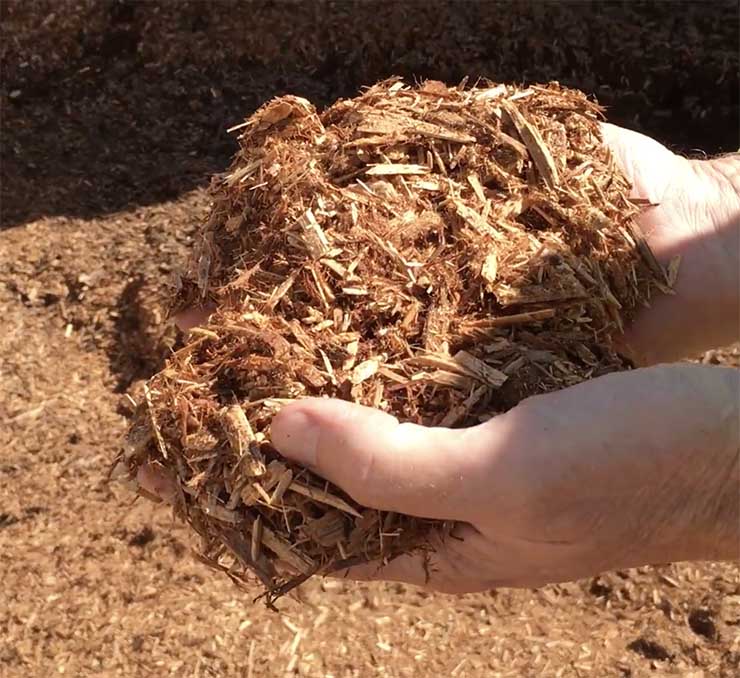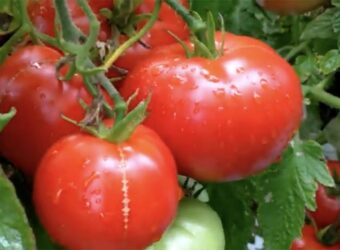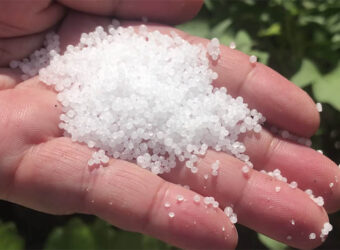Research shows that mulch stabilizes soil temperatures and moisture and helps protect from weeds. There are lots of different kinds of mulch, though, so what do you use where? Here is a guide to cypress mulch.
What Is Cypress Mulch?
Cypress mulch is the chipped-up trunk and bark of the bald cypress (Taxodium distichum) or pond cypress (Taxodium distichum var. nutans). It used to be made from the leftovers when cypress was used as flooring and other lumber, but now many mills exclusively make mulch from whole trees.
Pros and Cons of Cypress Mulch
Cypress mulch has the same benefits as other mulch. Here are some of the pros and cons of using cypress mulch in the landscape.
Environmental Impact
I do not ever recommend using cypress mulch because of the negative environmental impact that logging the cypress has. Cypress grows in swamps. Logging it degrades those swamps and deprives animals and birds of food and shelter. Cypress cannot be farmed easily, so there are no sustainable harvesting operations. I recommend hardwood mulch that is harvested sustainably for everything you would use cypress mulch for. However, if you intend to use cypress mulch, I will tell you how to do that.
Insect Resistant
Cypress has been shown to have some resistance to insects. The oils in cypress mulch repel termites, ants, cockroaches, and some other insects. Cypress mulch will not usually become infested with slugs, snails, and other problem critters that may live in other mulch. However, the cypress trees that show this property are mature cypress trees. Cypress trees can take hundreds of years to reach maturity. The young trees being harvested now don’t have as much oil and so won’t repel insects as much. The same oils that repel insects do not bother birds or mammals, so it is safe to use with chickens and dogs.
Soil Temperature and Moisture
Cypress mulch helps regulate soil temperature and moisture. In the winter, the mulch keeps the soil warmer, and in the summer, it keeps the soil cooler. In the spring, mulched areas will warm more slowly than unmulched areas, so you may want to remove the mulch until the soil warms, then replace it. Mulch slows the evaporation of water from the surface of the soil, keeping the soil moisture higher than uncovered ground.
Difficult to Wet
Cypress mulch can be difficult to get wet. The mulch repels water. This may limit the water that reaches the soil surface where plants can take it up, particularly if the plants are on a mound or slope. Cypress mulch that has baked in the sun for a while is especially hard to wet. It may shed water during a heavy rain, preventing the ground from getting any water.
Takes Water from Plants
At the same time, once the cypress does get wet, it absorbs large amounts of water, which may limit the water available to your plants. You will have to irrigate more if you use cypress mulch and make sure it never completely dries out.
Rot Resistant
Cypress wood has a reputation as being rot-resistant. This doesn’t mean it won’t rot, but it will take longer than hardwood mulch to rot. It will not decompose an inch a year to add organic matter to the soil but will last several years.
No Float Mulch
Cypress mulch is denser than other barks and clumps together when shredded, so it doesn’t float away in a hard rain. It is often marked as “No Float” mulch.
Controls Weeds
When used properly, cypress mulch controls weeds. The weed seeds still germinate, but they exhaust their food stores before penetrating the mulch and die.
Acidic Wood
Cypress mulch is acidic. Over time, it may acidify the soil and make plants that prefer alkaline soil struggle to survive.
Mislabeled Mulch
Bags labeled cypress mulch do not necessarily contain cypress mulch, so be careful what you buy. A study by Penn State found that 0-60% of the wood in different bags of cypress mulch was actually cypress. The balance was usually pine.
Applying Cypress Mulch to Your Landscape: When to Use and When Not to Use?
As I said, I do not ever recommend using cypress mulch because of the environmental impact. If you are determined to use it, cypress mulch works best in landscape beds and around trees and shrubs. Because it decomposes slowly, cypress mulch can cause a problem in the vegetable garden. When you till it under at the end of the season, the cypress mulch won’t decompose very quickly, so doesn’t add organic matter to the vegetable garden the way hardwood mulch will. It is similar to adding big branches to your compost pile.
What Is the Best Time to Apply Cypress Mulch?
There are best practices in using any mulch, including cypress mulch.
Time of Year
In the spring is a good time to apply fresh mulch around trees and shrubs and in landscape beds. I recommend three inches of mulch around trees, shrubs, and ornamental plants. Every spring, add another inch of mulch to replace the mulch that has decomposed over the year. Since cypress mulch takes longer to decompose, you may only need to add ½ inch to the existing mulch. Do not let the mulch get more than four inches deep, or it will damage the plants it is around.
Anytime you plant a new tree, shrub, or ornamental plant, I recommend you spread mulch around it regardless of the time of year.
Stage of Growth
If I am planting something from seed, I wait until the seedling is four inches tall before spreading three inches of mulch around it.
As soon as I transplant a seedling, I spread mulch around it. If the plant is smaller than three inches tall, I spread just a little mulch to cover the ground. As the plant grows, I add more mulch until there are three inches of mulch around the plant.
If I transplant an older plant, I put three inches of mulch around it when I plant it.
Make sure you water new cypress mulch well after spreading it to wet it thoroughly. Otherwise, the soil moisture will wick into the mulch and dehydrate your plant.
How to Apply Cypress Mulch to the Garden?
If you are going to apply cypress mulch despite the environmental impact, here is how to use it properly. Make sure the mulch does not touch the stem of the plants. Leave a three-inch gap around trees and shrubs and a one-inch gap around roses and other ornamentals between the mulch and the plant.
Vegetable Garden
I would not use cypress mulch in the garden. The mulch is too acidic and takes too long to decompose and add organic matter to the soil.
I would use straw or hardwood mulch in the garden.
Tomatoes and other vegetables generally require alkaline soil, and cypress mulch will lower the pH and make them struggle to grow. You can read our article if you are looking to mulch your tomato plants.
Flower Beds
Cypress mulch can be used in flower beds around perennial plants. Spread a layer that is three inches deep when installing the flower bed and after planting the transplants. Roses and other permanent plants will benefit from the mulch. Renew the mulch each spring with enough to keep the mulch three inches deep. Do not spread mulch over areas you want to seed with annual flowers, as the mulch will keep them from growing. After the annuals and bulbs are four inches high, mulch around them.
Fruit Trees
If you have one or two fruit trees, spread a three-inch layer of mulch under the drip line. If you have an orchard, a living mulch of clover works better. It adds nitrogen to the soil and controls weeds without competing too much with the trees.
Berries
Blueberries like acidic soil, so mulching them with a three-inch layer of mulch around their dripline makes sense. Strawberries also like acidic soil, so using cypress mulch in your strawberry bed will keep the soil acidic. However, pine straw would be an alternative that is more sustainable but maintains the acidic soil. Blackberries like alkaline soil, so I would use hardwood mulch instead of cypress mulch around my blackberries.
Ornamental Trees and Shrubs
I use a three-inch layer of mulch around each tree and shrub in my yard. Spread the mulch in a donut around the tree or shrub and three inches from the trunk out to the end of the drip line.
Landscaping
Many gardens have mulched paths. Cypress mulch is expensive, so I would use hardwood mulch for paths in my garden. However, you could use cypress mulch for this purpose.
Where Do I Buy Cypress Mulch?
Some nurseries will not carry cypress mulch because of the environmental impact of its harvest. Other nurseries do carry it. Big box stores like Home Depot, Lowe’s, and Walmart carry it. Amazon and other online retailers also carry it.
Some Good Cypress Mulch Options
Cypress blend mulches are easier to find than pure cypress mulch. I would suggest buying this locally because the shipping is prohibitive. Here are three brands to consider.
NoFloat Cypress Blend is sold by Home Depot, Lowe’s, Walmart, and Amazon. It is widely available. There is no indication of how much of the wood in the mulch is cypress. It is under $5 from the big box stores for a two-cubic-foot bag. It is much more expensive on Amazon.
Gardener’s Pride Cypress Mulch Blend is available from Home Depot. There is no indication on the label of how much of the wood is cypress. You will pay under $5 for a two-cubic-foot bag.
Garden Logic Cypress Mulch Blend is also available from Home Depot. It also does not indicate how much of the mulch is cypress. This is also under $5 for a two-cubic-foot bag.
Final Verdict
In conclusion, cypress mulch has the same benefits as all mulch: maintaining soil temperature and moisture, keeping weeds from growing, and protecting the soil from erosion. It is insect-resistant and rot-resistant. However, the environmental damage logging for cypress is bad enough that I do not recommend using it. I am not alone in that assessment. Extension does not recommend using cypress mulch, either, and most environmental organizations are against it.






